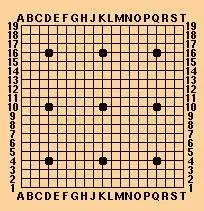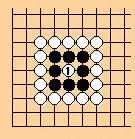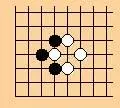AGA Rules Committee - Official AGA Rules of Go
Здесь есть возможность читать онлайн «AGA Rules Committee - Official AGA Rules of Go» весь текст электронной книги совершенно бесплатно (целиком полную версию без сокращений). В некоторых случаях можно слушать аудио, скачать через торрент в формате fb2 и присутствует краткое содержание. Жанр: Спорт, на английском языке. Описание произведения, (предисловие) а так же отзывы посетителей доступны на портале библиотеки ЛибКат.
- Название:Official AGA Rules of Go
- Автор:
- Жанр:
- Год:неизвестен
- ISBN:нет данных
- Рейтинг книги:4 / 5. Голосов: 1
-
Избранное:Добавить в избранное
- Отзывы:
-
Ваша оценка:
- 80
- 1
- 2
- 3
- 4
- 5
Official AGA Rules of Go: краткое содержание, описание и аннотация
Предлагаем к чтению аннотацию, описание, краткое содержание или предисловие (зависит от того, что написал сам автор книги «Official AGA Rules of Go»). Если вы не нашли необходимую информацию о книге — напишите в комментариях, мы постараемся отыскать её.
Official AGA Rules of Go — читать онлайн бесплатно полную книгу (весь текст) целиком
Ниже представлен текст книги, разбитый по страницам. Система сохранения места последней прочитанной страницы, позволяет с удобством читать онлайн бесплатно книгу «Official AGA Rules of Go», без необходимости каждый раз заново искать на чём Вы остановились. Поставьте закладку, и сможете в любой момент перейти на страницу, на которой закончили чтение.
Интервал:
Закладка:

AGA Rules Committee
Official AGA Rules of Go
http://www-2.cs.cmu.edu/~wjh/go/rules/AGA.html
September 1, 1991
{The following are the American Go Association Rules of Go for amateur play. Unless specifically stated otherwise, these rules are in effect at all AGA sanctioned events. The rules themselves are given in boldface; comments and examples are given in ordinary type [and surrounded with curly braces or parentheses]. Illustrative figures are [interspersed].}
Any paraphrase of these rules which is identical in content is acceptable as a statement of the AGA Rules of Go so long as it makes reference to the more complete Official Rules given below.(By "identical in content" we mean that the result of applying these paraphrased rules should give the same result as would the Official Rules in every situation.)
{These rules are supplemented by the Official AGA Tournament Regulations governing time control, player conduct, the role of monitors, etc.}
1) The Board and Stones: Go is a game of strategy between two sides usually played on a 19x19 grid (the board ). The game may also be played on smaller boards, 13x13 and 9x9 being the two most common variants. The board is initially vacant, unless a handicap is given (see Rule 4). The two sides, known as Black and White , are each provided with an adequate supply of playing tokens, known as stones , of the appropriate color.
{For recording purposes, the horizontal lines on the board are designated 1,2,3,…,19, starting from the bottom as seen by Black. The vertical lines are designated A,B,C,…,T (skipping 'I'), starting from the left as seen by Black. Points on the board are identified by their coordinates, c.g. A-1, C-3, T-19, etc.}
2) Play: The players alternate in moving, with Black playing first. In handicap games, White moves first after Black has placed his or her handicap stones. A move consists in playing a stone of one's color on an empty intersection (including edges and corners), or in passing . Certain moves are illegal (Rules 5 and 6), but a pass is always legal (Rule 7). Points are awarded for controlling space in a manner described below (Rule 12). The object of the game is to end with the greater total number of points.
3) Compensation: In an even (non-handicap) game, Black gives White a compensation of 5 1/2 points for the advantage of the first move. This compensation is added to White's score at the end of the game. In handicap games, Black gives White 1/2 point compensation. This avoids draws.
4) Handicaps: The game may be played with a handicap to compensate for differences in player strengths. The weaker player takes Black, and either moves first, giving only 1/2 point compensation to White, as in Rule 3 (this is known as a "one stone handicap"), or places from 2 to 9 stones on the board before the first White move.
{The nine intersections corresponding to the horizontal lines 4, 10, and 16 and the vertical lines D, K, and Q are called star points , and are ordered as follows: (See Figure 1.)
1st star point Q-16 5th star point Q-10
2nd star point D-4 6th star point D-10
3rd star point Q-4 7th star point K-16
4th star point D-16 8th star point K-4
9th star point K-10 (center point)

Figure 1
The handicap stones are traditionally played as follows:
2 stones on the 1st and 2nd star points
3 stones on the 1st through 3rd star points
4 stones on the 1st through 4th star points
5 stones on the 1st through 4th star points and the center point
6 stones on the 1st through 6th star points
7 stones on the 1st through 6th star points and the center point
8 stones on the 1st through 8th star points
9 stones on the 1st through 9th star points
Unless otherwise specified, handicap stones shall be placed in this fashion. Handicaps greater than nine stones and handicaps on boards with fewer than 19 lines are not standardized.}
If the players have agreed to use area counting to score the game (Rule 12), White receives an additional point of compensation for each Black handicap stone after the first.(Black would otherwise gain an additional point of area for each handicap stone.)
5) Capture: Stones of the same color are said to be connected if they are adjacent along horizontal or vertical- not diagonal-lines on the board. A string of connected stones consists of those stones which can be reached from a given stone by moving only to adjacent stones of the same color. A string of connected stones is surrounded by stones of the opposite color if it has no empty points horizontally or vertically- not diagonally-adjacent to any of its member stones. (Such adjacent empty points are known as liberties of the string.)
After a player moves, any stone or string of stones belonging to the opponent which is completely surrounded by the player's own stones is captured , and removed from the board. Such stones become prisoners of the capturing player. It is illegal for a player to move so as to create a string of his or her own stones which is completely surrounded (without liberties) after any surrounded opposing stones are captured.
{This means that it is possible to fill an empty space within an opponent's group and capture even if the player's own stone or stones would momentarily be surrounded by the group being captured. See Figure 2. But self-capture is illegal.

Figure 2. White 1 captures the Black stones
}
6) Repeated Board Position (Ko): It is illegal to play in such a way as to recreate a previous board position from the game, with the same player to play.
{The most typical example is a situation where the players can each alternately capture and recapture a single stone. This is known as "ko" (See Figure 3). After the first capture, the player moving next may not capture immediately, as this would repeat the board position; instead, that player must play elsewhere on the board (or pass). The player who first captured may then "fill" the ko (or otherwise resolve it), or play elsewhere as well (often in response to the other player's previous move.) If the board position has changed, and the ko has not yet been resolved, the opponent is then free to capture, and it is the original player who may not then immediately recapture. This process is known as a ko fight , and the moves played away from the ko itself are known as ko threats .

Figure 3. Ko
Rarely, multiple kos or other repetitive situations will arise; the principle for handling them is always the same: the players must avoid repeating the full-board position, so they are periodically, and alternately, forced to play away from the repetitive situation before responding.}
Читать дальшеИнтервал:
Закладка:
Похожие книги на «Official AGA Rules of Go»
Представляем Вашему вниманию похожие книги на «Official AGA Rules of Go» списком для выбора. Мы отобрали схожую по названию и смыслу литературу в надежде предоставить читателям больше вариантов отыскать новые, интересные, ещё непрочитанные произведения.
Обсуждение, отзывы о книге «Official AGA Rules of Go» и просто собственные мнения читателей. Оставьте ваши комментарии, напишите, что Вы думаете о произведении, его смысле или главных героях. Укажите что конкретно понравилось, а что нет, и почему Вы так считаете.












